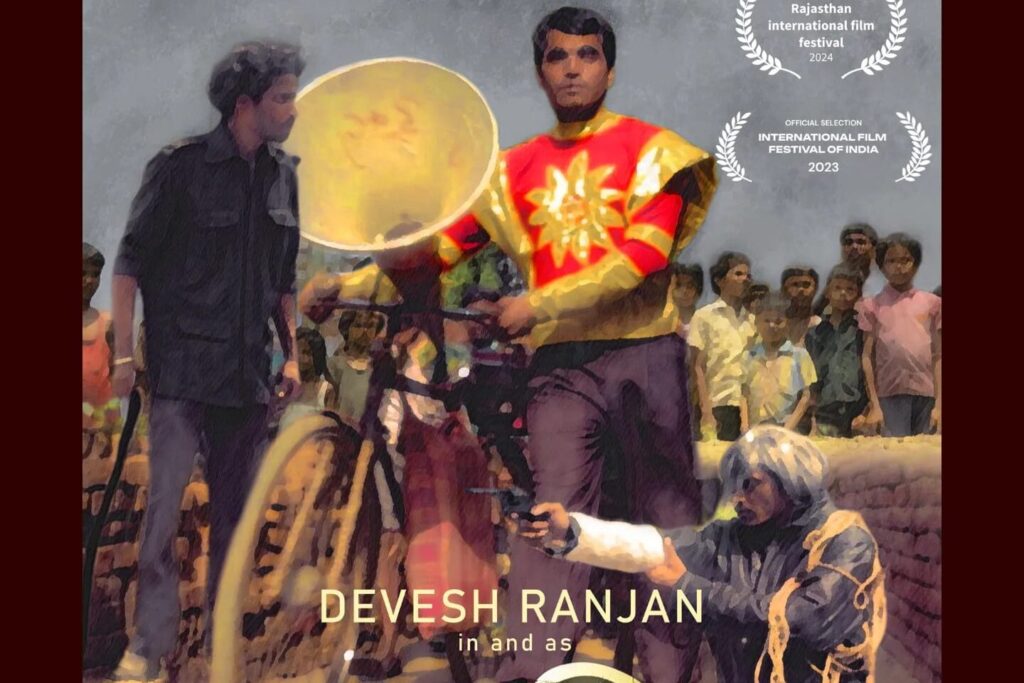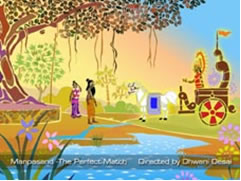Story of a Lonely Artist

Film Criticism | Behrupiya
It sounds pathetic, but the reality is that a huge number of folk art forms are on the verge of vanishing from the world. There may be many reasons for this disappearing state within our society. Several Indian films have been made on this existential crisis of folk art forms and the void it has created. Bhaskar Biswanathan’s short film ‘Behrupia,’ based on a similar theme, has been selected for this year’s Indian Panorama.
‘Behrupia’ is a familiar character in rural areas of India, mainly in the Hindi belts. Currently, these multifaceted ‘Behrupiyas’ are mainly confined to Hanuman, Shiva, and Kali forms. These three characters are immensely respected and worshipped by the common public. There are also stories about how kings and emperors used such ‘Behrupiyas’ for spying.
The film’s ‘Behrupiya’ is a member of the present day’s world. He carries a small sound system on his bicycle. He travels from place to place, performing his art of being a ‘Behrupiya,’ enacting popular dialogues from Hindi films and television serials. He also uses costumes to enhance the look of the character he plays. Most of his audience is comprised of children, with a small number being women. No matter how happy the children are, they cannot afford to support him financially. The village women also lack financial capacity, so some of them give rice and other food items. Incidentally, once his foot gets hurt, he cannot work. One day, while fetching water and returning home, he finds that his costumes are gone. Despite his unimaginable injuries, he wanders the village in search of his stolen costumes.The story is simple, and the audience is often familiar with the expected sadness and pain of the ending of such stories. The extinction of folk art is sad for connoisseurs, yet there is no way but to accept it as part of the evolution of time. The film is about the life of a modern-day Behrupiya. This modern Behrupiya is a creation of the story-writer. Such modifications will certainly hurt the traditional character of folk art, but they will also reveal a picture of the recent trend of folk life in a society where the influence of cinema and TV serials is unimaginable. The story writer-director may have thought that some modernization could give a new life to this endangered folk art form. In support of this, he shows that the costumes and dialogues of the characters attracted the children’s community, and some children have even expressed their desire to become a ‘Behrupiya.’ This positive attitude distinguishes the film from other films on the same subject. In Buddhadev Dasgupta’s ‘Bagh Bahadur,’ the folk artist died of exhaustion in the struggle for survival, announcing the tragic end of an art form. In contrast, Bhaskar Biswanathan’s film is a message of hope that the younger generation is showing interest in the multifaceted and going along with it, distinguishing the film from similar films.
The film’s lead actor, Devesh Ranjan, makes the character believable. His expressions were explosive, especially in the silent parts. Earlier, he successfully played the central role in Kamakhya Narayan Singh’s ‘Bhor.’
A calm and lively picture of a village in Bihar is beautifully captured by the camera, creating the necessary local setting for the story. The camera plays a significant role in capturing the subtle expressions of the main character. Director of Photography Yogendra Panda has helped the director realize the vision of the director. The film is edited by Himanshu Dwivedi and Deepankar Sarkar. The editor’s skill is particularly noticeable in the scenes where the devastated ‘Behrupiya’ goes around looking for the clothes after they are stolen. In terms of the story, the character’s mind was restless and fast at that moment, but the injury to his leg prevented him from walking fast. The editor has balanced the pace of the film by properly controlling these two opposing motions. The music of the film also keeps the plot moving. The film is produced by Aditi Santosh Tapasvi and Bikram Viswanathan.
Two Assamese technicians were associated with the film in editing and BGM, and they are Dipankar Sarkar and Arnab Deka, respectively.
—- Utpal Datta










